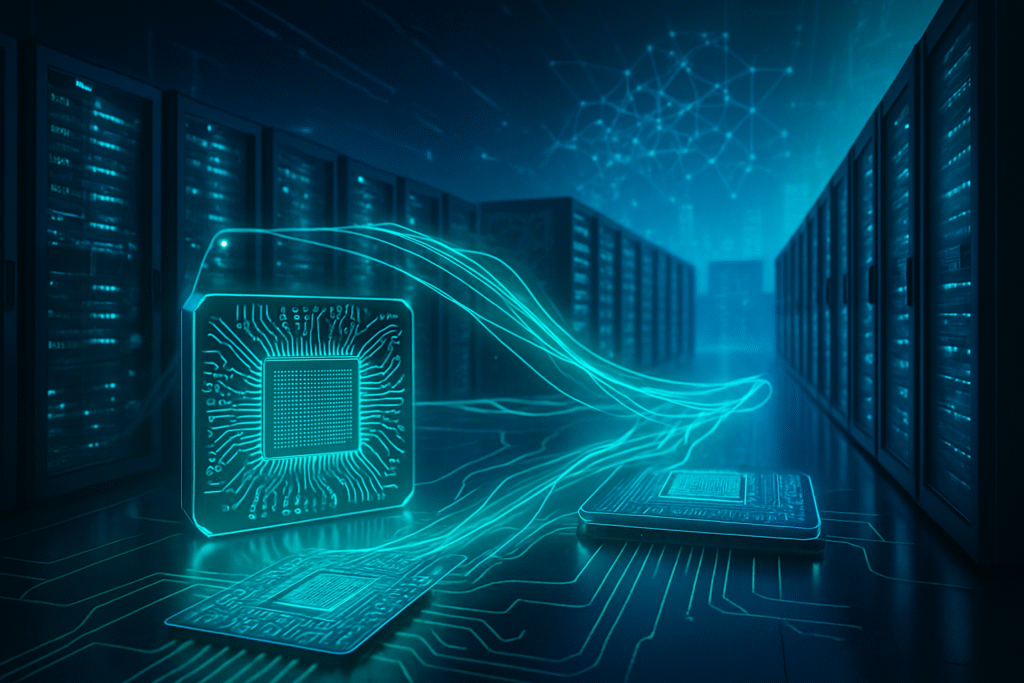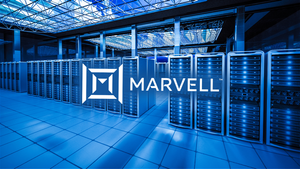
The global technology landscape is undergoing a profound transformation, driven by the insatiable demands of Artificial Intelligence (AI) and the relentless expansion of data centers. This symbiotic relationship is propelling the semiconductor industry into an unprecedented multi-year supercycle, with market projections soaring into the trillions of dollars. At the heart of this revolution, companies like Aehr Test Systems (NASDAQ: AEHR) are playing a crucial, if often unseen, role in ensuring the reliability and performance of the high-power chips that underpin this technological shift. Their recent reports underscore a sustained demand and long-term growth trajectory in these critical sectors, signaling a fundamental reordering of the global computing infrastructure.
This isn't merely a cyclical upturn; it's a foundational shift where AI itself is the primary demand driver, necessitating specialized, high-performance, and energy-efficient hardware. The immediate significance for the semiconductor industry is immense, making reliable testing and qualification equipment indispensable. The surging demand for AI and data center chips has elevated semiconductor test equipment providers to critical enablers of this technological shift, ensuring that the complex, mission-critical components powering the AI era can meet stringent performance and reliability standards.
The Technical Backbone of the AI Era: Aehr's Advanced Testing Solutions
The computational demands of modern AI, particularly generative AI, necessitate semiconductor solutions that push the boundaries of power, speed, and reliability. Aehr Test Systems (NASDAQ: AEHR) has emerged as a pivotal player in addressing these challenges with its suite of advanced test and burn-in solutions, including the FOX-P family (FOX-XP, FOX-NP, FOX-CP) and the Sonoma systems, acquired through Incal Technology. These platforms are designed for both wafer-level and packaged-part testing, offering critical capabilities for high-power AI chips and multi-chip modules.
The FOX-XP system, Aehr's flagship, is a multi-wafer test and burn-in system capable of simultaneously testing up to 18 wafers (300mm), each with independent resources. It delivers thousands of watts of power per wafer (up to 3500W per wafer) and provides precise thermal control up to 150 degrees Celsius, crucial for AI accelerators. Its "Universal Channels" (up to 2,048 per wafer) can function as I/O, Device Power Supply (DPS), or Per-pin Precision Measurement Units (PPMU), enabling massively parallel testing. Coupled with proprietary WaferPak Contactors, the FOX-XP allows for cost-effective full-wafer electrical contact and burn-in. The FOX-NP system offers similar capabilities, scaled for engineering and qualification, while the FOX-CP provides a compact, low-cost solution for single-wafer test and reliability verification, particularly for photonics applications like VCSEL arrays and silicon photonics.
Aehr's Sonoma ultra-high-power systems are specifically tailored for packaged-part test and burn-in of AI accelerators, Graphics Processing Units (GPUs), and High-Performance Computing (HPC) processors, handling devices with power levels of 1,000 watts or more, up to 2000W per device, with active liquid cooling and thermal control per Device Under Test (DUT). These systems features up to 88 independently controlled liquid-cooled high-power sites and can provide 3200 Watts of electrical power per Distribution Tray with active liquid cooling for up to 4 DUTs per Tray.
These solutions represent a significant departure from previous approaches. Traditional testing often occurs after packaging, which is slower and more expensive if a defect is found. Aehr's Wafer-Level Burn-in (WLBI) systems test AI processors at the wafer level, identifying and removing failures before costly packaging, reducing manufacturing costs by up to 30% and improving yield. Furthermore, the sheer power demands of modern AI chips (often 1,000W+ per device) far exceed the capabilities of older test solutions. Aehr's systems, with their advanced liquid cooling and precise power delivery, are purpose-built for these extreme power densities. Industry experts and customers, including a "world-leading hyperscaler" and a "leading AI processor supplier," have lauded Aehr's technology, recognizing its critical role in ensuring the reliability of AI chips and validating the company's unique position in providing production-proven solutions for both wafer-level and packaged-part burn-in of high-power AI devices.
Reshaping the Competitive Landscape: Winners and Disruptors in the AI Supercycle
The multi-year market opportunity for semiconductors, fueled by AI and data centers, is dramatically reshaping the competitive landscape for AI companies, tech giants, and startups. This "AI supercycle" is creating both unprecedented opportunities and intense pressures, with reliable semiconductor testing emerging as a critical differentiator.
NVIDIA (NASDAQ: NVDA) remains a dominant force, with its GPUs (Hopper and Blackwell architectures) and CUDA software ecosystem serving as the de facto standard for AI training. Its market capitalization has soared, and AI sales comprise a significant portion of its revenue, driven by substantial investments in data centers and strategic supply agreements with major AI players like OpenAI. However, Advanced Micro Devices (NASDAQ: AMD) is rapidly gaining ground with its MI300X accelerator, adopted by Microsoft (NASDAQ: MSFT) and Meta Platforms (NASDAQ: META). AMD's monumental strategic partnership with OpenAI, involving the deployment of up to 6 gigawatts of AMD Instinct GPUs, is expected to generate "tens of billions of dollars in AI revenue annually," positioning it as a formidable competitor. Intel (NASDAQ: INTC) is also investing heavily in AI-optimized chips and advanced packaging, partnering with NVIDIA to develop data centers and chips.
The Taiwan Semiconductor Manufacturing Company (NYSE: TSM), as the world's largest contract chipmaker, is indispensable, manufacturing chips for NVIDIA, AMD, and Apple (NASDAQ: AAPL). AI-related applications accounted for a staggering 60% of TSMC's Q2 2025 revenue, and its CoWoS advanced packaging technology is critical for high-performance computing (HPC) for AI. Memory suppliers like SK Hynix (KRX: 000660), with a 70% global High-Bandwidth Memory (HBM) market share in Q1 2025, and Micron Technology (NASDAQ: MU) are also critical beneficiaries, as HBM is essential for advanced AI accelerators.
Hyperscalers like Alphabet's Google (NASDAQ: GOOGL), Amazon (NASDAQ: AMZN), and Microsoft are increasingly developing their own custom AI chips (e.g., Google's TPUs, Amazon's Inferentia, Azure Maia 100) to optimize performance, control costs, and reduce reliance on external suppliers. This trend signifies a strategic move towards vertical integration, blurring the lines between chip design and cloud services. Startups are also attracting billions in funding to develop specialized AI chips, optical interconnects, and efficient power delivery solutions, though they face challenges in competing with tech giants for scarce semiconductor talent.
For companies like Aehr Test Systems, this competitive landscape presents a significant opportunity. As AI chips become more complex and powerful, the need for rigorous, reliable testing at both the wafer and packaged levels intensifies. Aehr's unique position in providing production-proven solutions for high-power AI processors is critical for ensuring the quality and longevity of these essential components, reducing manufacturing costs, and improving overall yield. The company's transition from a niche player to a leader in the high-growth AI semiconductor market, with AI-related revenue projected to reach up to 40% of its fiscal 2025 revenue, underscores its strategic advantage.
A New Era of AI: Broader Significance and Emerging Concerns
The multi-year market opportunity for semiconductors driven by AI and data centers represents more than just an economic boom; it's a fundamental re-architecture of global technology with profound societal and economic implications. This "AI Supercycle" fits into the broader AI landscape as a defining characteristic, where AI itself is the primary and "insatiable" demand driver, actively reshaping chip architecture, design, and manufacturing processes specifically for AI workloads.
Economically, the impact is immense. The global semiconductor market, projected to reach $1 trillion by 2030, will see AI chips alone generating over $150 billion in sales in 2025, potentially reaching $459 billion by 2032. This fuels massive investments in R&D, manufacturing facilities, and talent, driving economic growth across high-tech sectors. Societally, the pervasive integration of AI, enabled by these advanced chips, promises transformative applications in autonomous vehicles, healthcare, and personalized AI assistants, enhancing productivity and creating new opportunities. AI-powered PCs, for instance, are expected to constitute 43% of all PC shipments by the end of 2025.
However, this rapid expansion comes with significant concerns. Energy consumption is a critical issue; AI data centers are highly energy-intensive, with a typical AI-focused data center consuming as much electricity as 100,000 households. US data centers could account for 6.7% to 12% of total electricity generated by 2028, necessitating significant investments in energy grids and pushing for more efficient chip and system architectures. Water consumption for cooling is also a growing concern, with large data centers potentially consuming millions of gallons daily.
Supply chain vulnerabilities are another major risk. The concentration of advanced semiconductor manufacturing, with 92% of the world's most advanced chips produced by TSMC in Taiwan, creates a strategic vulnerability amidst geopolitical tensions. The "AI Cold War" between the United States and China, coupled with export restrictions, is fragmenting global supply chains and increasing production costs. Shortages of critical raw materials further exacerbate these issues. This current era of AI, with its unprecedented computational needs, is distinct from previous AI milestones. Earlier advancements often relied on general-purpose computing, but today, AI is actively dictating the evolution of hardware, moving beyond incremental improvements to a foundational reordering of the industry, demanding innovations like High Bandwidth Memory (HBM) and advanced packaging techniques.
The Horizon of Innovation: Future Developments in AI Semiconductors
The trajectory of the AI and data center semiconductor market points towards an accelerating pace of innovation, driven by both the promise of new applications and the imperative to overcome existing challenges. Experts predict a sustained "supercycle" of expansion, fundamentally altering the technological landscape.
In the near term (2025-2027), we anticipate the mass production of 2nm chips by late 2025, followed by A16 (1.6nm) chips for data center AI and HPC by late 2026, leading to more powerful and energy-efficient processors. While GPUs will continue their dominance, AI-specific ASICs are rapidly gaining momentum, especially from hyperscalers seeking optimized performance and cost control; ASICs are expected to account for 40% of the data center inference market by 2025. Innovations in memory and interconnects, such as DDR5, HBM, and Compute Express Link (CXL), will intensify to address bandwidth bottlenecks, with photonics technologies like optical I/O and Co-Packaged Optics (CPO) also contributing. The demand for HBM is so high that Micron Technology (NASDAQ: MU) has its HBM capacity for 2025 and much of 2026 already sold out. Geopolitical volatility and the immense energy consumption of AI data centers will remain significant hurdles, potentially leading to an AI chip shortage as demand for current-generation GPUs could double by 2026.
Looking to the long term (2028-2035 and beyond), the roadmap includes A14 (1.4nm) mass production by 2028. Beyond traditional silicon, emerging architectures like neuromorphic computing, photonic computing (expected commercial viability by 2028), and quantum computing are poised to offer exponential leaps in efficiency and speed. The concept of "physical AI," with billions of AI robots globally by 2035, will push AI capabilities to every edge device, demanding specialized, low-power, high-performance chips for real-time processing. The global AI chip market could exceed $400 billion by 2030, with semiconductor spending in data centers alone surpassing $500 billion, representing more than half of the entire semiconductor industry.
Key challenges that must be addressed include the escalating power consumption of AI data centers, which can require significant investments in energy generation and innovative cooling solutions like liquid and immersion cooling. Manufacturing complexity at bleeding-edge process nodes, coupled with geopolitical tensions and a critical shortage of skilled labor (over one million additional workers needed by 2030), will continue to strain the industry. Supply chain bottlenecks, particularly for HBM and advanced packaging, remain a concern. Experts predict sustained growth and innovation, with AI chips dominating the market. While NVIDIA currently leads, AMD is rapidly emerging as a chief competitor, and hyperscalers' investment in custom ASICs signifies a trend towards vertical integration. The need to balance performance with sustainability will drive the development of energy-efficient chips and innovative cooling solutions, while government initiatives like the U.S. CHIPS Act will continue to influence supply chain restructuring.
The AI Supercycle: A Defining Moment for Semiconductors
The current multi-year market opportunity for semiconductors, driven by the explosive growth of AI and data centers, is not just a transient boom but a defining moment in AI history. It represents a fundamental reordering of the technological landscape, where the demand for advanced, high-performance chips is unprecedented and seemingly insatiable.
Key takeaways from this analysis include AI's role as the dominant growth catalyst for semiconductors, the profound architectural shifts occurring to resolve memory and interconnect bottlenecks, and the increasing influence of hyperscale cloud providers in designing custom AI chips. The criticality of reliable testing, as championed by companies like Aehr Test Systems (NASDAQ: AEHR), cannot be overstated, ensuring the quality and longevity of these mission-critical components. The market is also characterized by significant geopolitical influences, leading to efforts in supply chain diversification and regionalized manufacturing.
This development's significance in AI history lies in its establishment of a symbiotic relationship between AI and semiconductors, where each drives the other's evolution. AI is not merely consuming computing power; it is dictating the very architecture and manufacturing processes of the chips that enable it, ushering in a "new S-curve" for the semiconductor industry. The long-term impact will be characterized by continuous innovation towards more specialized, energy-efficient, and miniaturized chips, including emerging architectures like neuromorphic and photonic computing. We will also see a more resilient, albeit fragmented, global supply chain due to geopolitical pressures and the push for sovereign manufacturing capabilities.
In the coming weeks and months, watch for further order announcements from Aehr Test Systems, particularly concerning its Sonoma ultra-high-power systems and FOX-XP wafer-level burn-in solutions, as these will indicate continued customer adoption among leading AI processor suppliers and hyperscalers. Keep an eye on advancements in 2nm and 1.6nm chip production, as well as the competitive landscape for HBM, with players like SK Hynix (KRX: 000660) and Samsung Electronics (KRX: 005930) vying for market share. Monitor the progress of custom AI chips from hyperscalers and their impact on the market dominance of established GPU providers like NVIDIA (NASDAQ: NVDA) and AMD (NASDAQ: AMD). Geopolitical developments, including new export controls and government initiatives like the US CHIPS Act, will continue to shape manufacturing locations and supply chain resilience. Finally, the critical challenge of energy consumption for AI data centers will necessitate ongoing innovations in energy-efficient chip design and cooling solutions. The AI-driven semiconductor market is a dynamic and rapidly evolving space, promising continued disruption and innovation for years to come.
This content is intended for informational purposes only and represents analysis of current AI developments.
TokenRing AI delivers enterprise-grade solutions for multi-agent AI workflow orchestration, AI-powered development tools, and seamless remote collaboration platforms. For more information, visit https://www.tokenring.ai/.





